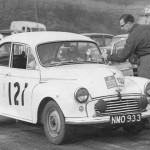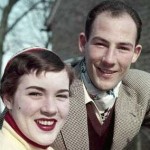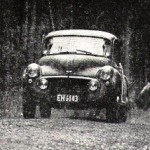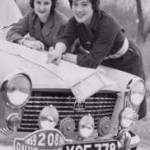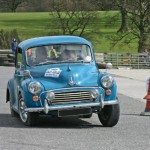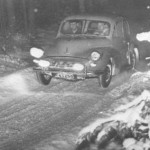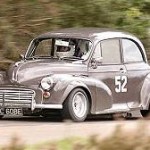A Minor Hero
The Monte Carlo Rally seldom fails to bring about a barrage of memories of the Swinging Sixties and the Mini-Cooper S. After all, it was the performances of the cheeky little cars in the hands of the all-star BMC team and under the guidance of the svengali-like skills of Stuart Turner that forged the modern myth not only of the Mini but of the event itself.
Images of the storied red and white pocket rockets ploughing through Alpine snow or zipping round the harbour are as iconic as Emma Peel’s catsuit, hippies and Beatle haircuts. And yet for the vast majority of people the 1960s experience did not include free love, Merseybeat or even the Mini.
Undoubtedly Alec Issigonis created one of the world’s finest driver’s cars when he put his heart and soul into the Mini but in the real world it was a disaster. It was too small and too expensive for most people, while the innovative engineering was way ahead of what the factories were capable of producing, as solid as a soufflé and so expensive that the British Motor Corporation lost £30 on every car it sold.
Fortunately BMC didn’t sell very many of them, but as their owners were people like Steve McQueen, Enzo Ferrari and Twiggy the Mini myth that began on the Col de Turini was cemented with celebrity stardust. Meanwhile the rest of the world preferred Julie Andrews to Janis Joplin and drove around in more practical transport – quite often the Mini’s older, frumpier but no less brilliant older sister, the Morris Minor, which was Britain’s best-selling car of the decade.
The Minor was sketched out by Issigonis towards the end of World War 2 and looked like a bowler hat on wheels. Yet its creator knew that minimalist construction could be translated into finely-honed handling, and with the Minor he brought the good news to the masses. Very few cars of the same era could boast anything like the involvement behind the wheel that a Minor could hustle up – and so beneath that exterior, so redolent of district nurses and village policemen, there was in fact the stuff of dreams for aspiring racing drivers.
Among the many buyers were Stirling Moss and Bruce McLaren, who tinkered with their Morrises, while the racing driver turned TV presenter Tiff Needell swears blind that the art of four-wheel-drifting has never been a more enjoyable experience than when he was at the wheel of the family Minor. Yet the sportiness of Issigonis’s creation was a well-kept secret compared to that of the Mini.
It was Pat Moss, Stirling’s little sister, who set the record straight. She began by putting in some sterling performances but came of age on the 1958 RAC Rally, when she took the wheel of a pale green Minor that was nicknamed ‘Granny’ and with it she scored fourth overall – BMC’s best-ever international result at that point, eclipsing the MGs and Austin Healeys while blazing a trail for the Minor’s cute little sister that would lead all the way to victory in Monte Carlo.
The Minor stayed active throughout the 1960s and 1970s in the thick of grass roots motor sport. Enterprising individuals found that you could fit a V8 motor easily and cheaply underneath the Minor’s bulbous bonnet, making a lightweight and powerful drag racer at minimal cost. Meanwhile on hillclimbs, sprints and autotests the more standard Minor was still giving hopefuls an early taste of what real driving was about.
Yet the Minor’s finest hour was still ahead of it. In early 1980 the Bishop of St. Albans was enthroned as the 102nd Archbishop of Canterbury, but later in the year Robert Runcie made headlines not as the leader of the Church of England, but as a rally driver. Taking the wheel of a humble blue Minor that had seldom seen beyond the fringe of his diocese , the Archbish proceeded to tackle the Himalayan Rally – unarguably one of the most gruelling events on earth and one fraught with danger of both natural and man-made varieties.
The entry list was star-studded but the small and unremarkable-looking Englishman took his small and unremarkable-looking car from start to finish and notched up 15th place overall in his bid to raise money and awareness for cancer research. Runcie’s car now sits in the National Motor Museum at Beaulieu, probably the most famous ‘Moggy’ in the world, and yet almost completely overlooked – perhaps fittingly for this most humble of sporting success stories.

